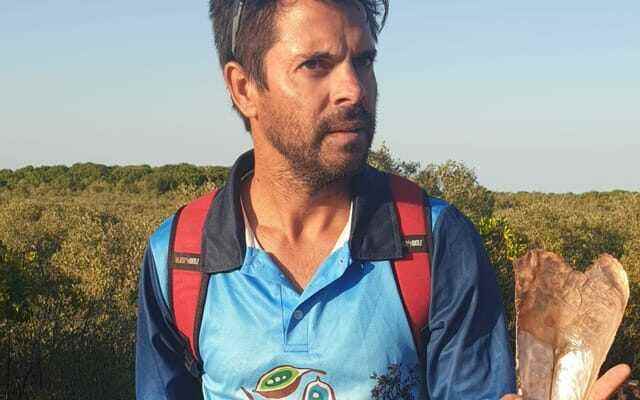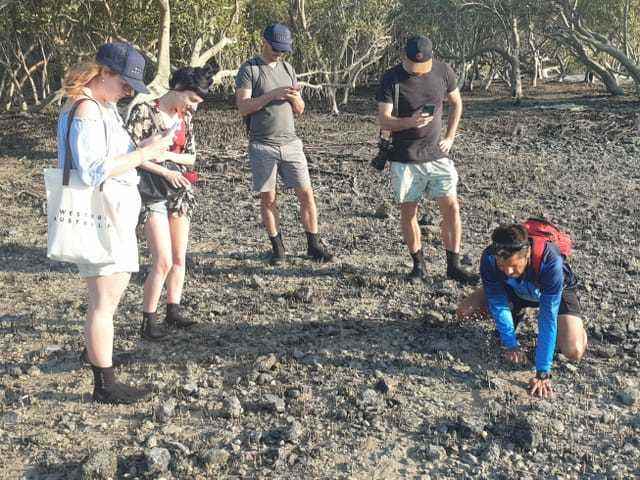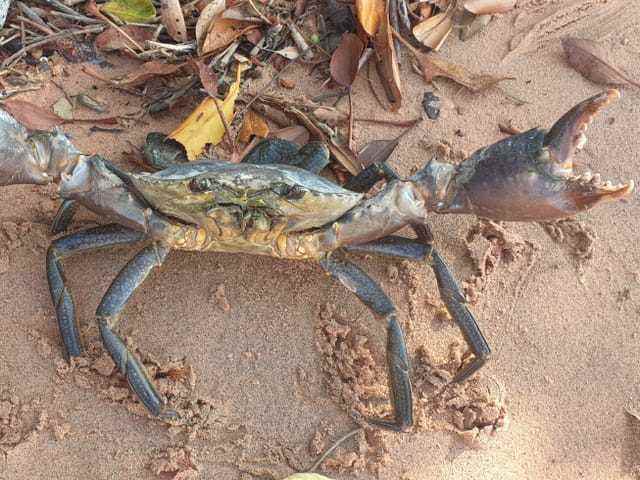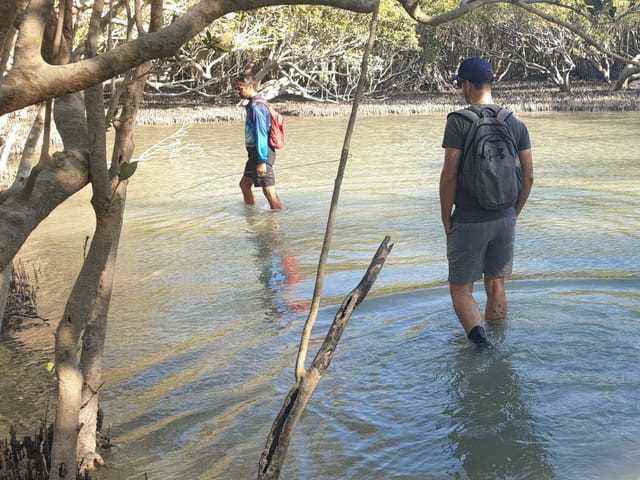contents
Shorter life expectancy, unemployment, racism – terms that are often associated with Australian Aborigines. But there is another way: More and more Aborigines are opening their own tourism businesses. This not only brings income, but also more understanding of the cultures.
Bart Pigram stares at the floor. Only two small dots in the gray mud indicate that a crab is hiding here. He pulls the animal out of its hiding place with a long metal hook. The crab reaches out wildly with its massive claws, which are so strong they could snap off your finger. “Lunch,” says Pigram happily.
The young Aboriginal man is not alone. A group of tourists follows him through the mangrove swamps outside the small town of Broome in northwestern Australia.
Visitors are not without a certain nervousness. Poisonous snakes and crocodiles also live in the thicket of the mangroves. The founder and owner of «Narlijia Tours» explains to Europeans how to behave – they will soon feel safe.
Pigram knows what he’s doing. He’s been hunting here for as long as he can remember, he says, as have generations of his ancestors before him. Only today he is paid for it by visitors. “I can come here, to the traditional habitat of my forefathers, to hunt, fish and gather,” says Pigram, “just as I have done since childhood.” In contrast to the past, he can finance a modern life by cultivating these traditions.
Later, Pigram will get in his car and drive home, as millions of Australians do every day when work is over.
Bart Pigram is part of a growing industry: Aboriginal tourism. One study defines this form of tourism as “taking part in a tour, experience or activity that involves interaction with Aboriginal and Torres Strait Islander people, a community, site or artefact, in a way that is appropriate, respectful and consistent with Aboriginal culture, heritage and traditions».
Aboriginal tourism is growing
The desire to get to know indigenous Australia better is growing among visitors, confirms Christoph Bärlocher from Knecht-Reisen, a leading Swiss tour operator. “In my opinion, such an experience is part of every trip to Australia,” he says, because guests should also get to know the indigenous part of Australia’s history.
Before the Covid pandemic, 820,000 of a total of 910,000 international visitors were looking for an exchange with the first cultures of the fifth continent. That pays off: Aboriginal tourism and the trade in indigenous products – above all works of art – contribute around four billion Swiss francs to the Australian economy every year.
In my opinion, such an experience is part of every trip to Australia.
Although there are also tours in the cities, Indigenous Australians show travelers from all over the world, especially in rural areas, how they traditionally live. They also give insights into their spirituality and mythologies that have been passed down orally over thousands of years.
In most cases, the relevant tour companies are owned and operated by the indigenous people themselves. This way you can generate income not only for yourself but also for other members of your community.
Survival in the barren outback
This is also the case in central Australia, where «Karke Aboriginal Tours» in the shadow of the imposing «Kings Canyon» mountains shows visitors how people were able to survive in such isolated desert areas for tens of thousands of years.
Tourists listen intently to the sound of two boomerangs hitting each other while a man sings in the local Luritja language. In the desert, too, everyday life traditionally revolves around hunting and gathering “bush food” – naturally occurring food.
Aboriginal woman Natasha explains the importance of individual plants and animals that can be found in this barren landscape. Right at the top of the wish list: so-called «Witchetty Grubs». Females dig deep into the ground to peel these thumb-thick maggots from the roots of certain trees.
They are not just a delicacy, but an important source of protein. “You can either roast them on the fire or eat them raw,” Natasha explains to the amazed tourists. You just have to bite off their heads before you swallow them. “Otherwise they bite you in the esophagus”.
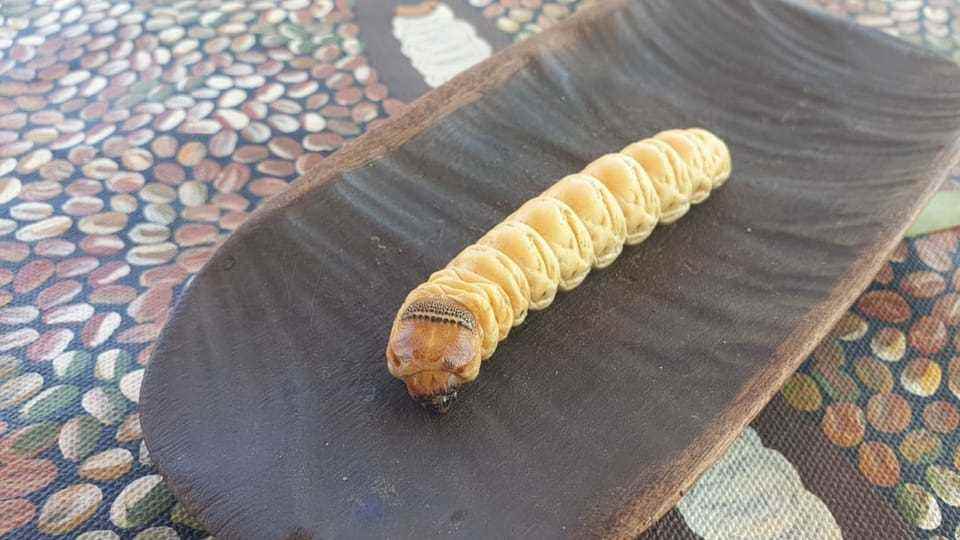
Legend:
Witchetty grubs are delicacies – and an important source of protein.
SRF
Finding economic independence, creating jobs, surviving – these have been challenges for Indigenous Australians since the continent was invaded by British convicts and settlers in 1788.
Unemployment among Aborigines is above average. The reason, especially in rural areas, is not just a general lack of employment opportunities. In many places, Aborigines still suffer from hidden or overt racism. Because even if they want to work, they can’t find a job.
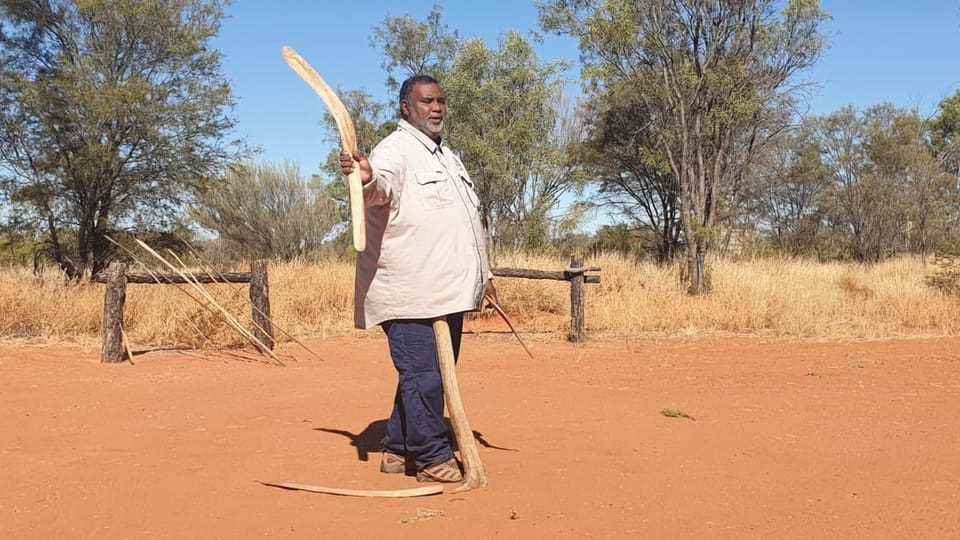
Legend:
At Kings Canyon in central Australia, the indigenous people also demonstrate hunting and gathering techniques.
SRF
Aborigines are increasingly taking their economic destiny into their own hands. Like in South Australia, where ex-rugby player Daniel Motlop sells food and drink gathered or made by Aboriginal people in Adelaide City’s Central Market.
Whether kangaroo meat, spice mixtures from plants collected by women in the Northern Territory: “I try to commercialize traditional ingredients to ensure their sustainable use and secure jobs in remote Aboriginal communities.”
He now supplies his products to some of Australia’s best known fine dining restaurants. His blockbuster is a gin with green tree ants swimming in it – dead of course. “They are traditionally a source of vitamin C for indigenous people in the tropics,” explains the businessman. But they give the spirit “a slight lemon taste”.
